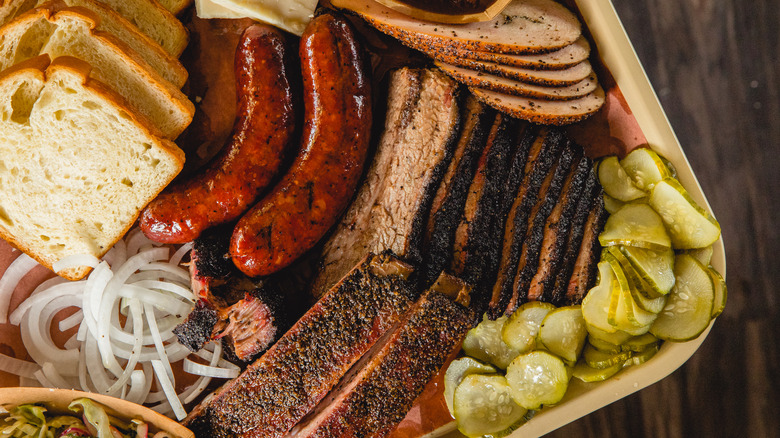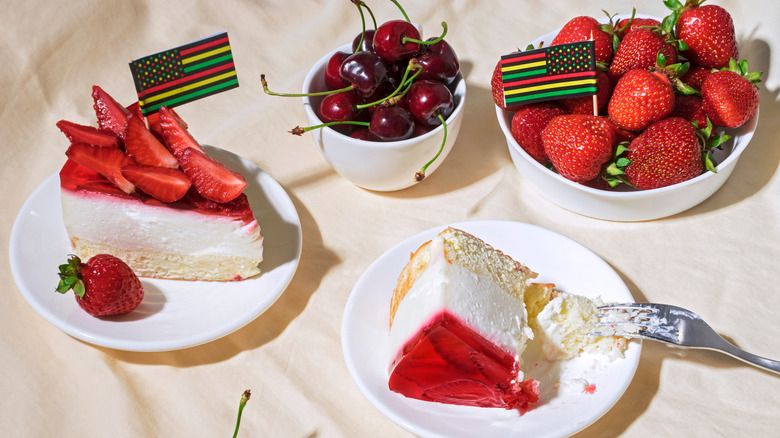How Barbecue Became The Traditional Food Of Juneteenth Celebrations
When President Biden signed Juneteenth into federal law as a holiday in 2021, it sparked widespread awareness and engagement, prompting more Americans to learn what it is and how it's celebrated. Juneteenth, which takes place annually on June 19th (the name is a portmanteau of the date), commemorates the moment in 1865 when the last enslaved African Americans in the U.S. were finally freed from bondage — two years after the Emancipation Proclamation was originally issued. Celebrations began the following year and have continued ever since. What began with new outfits, prayers, and singing has since evolved into parades, festivals, and feasting — specifically on barbecue.
But how did barbecue become the traditional food of Juneteenth celebrations? It has a lot to do with geography, since the holiday originated in Texas — a state known far and wide for its barbecue. Beyond that, barbecue feeds a crowd and encourages gathering, both as a family and as a community. African Americans had been barbecuing in the decades before the Civil War throughout the American South, so it's no surprise that when Juneteenth celebrations spread, barbecue remained the meal of choice.
Today, a traditional Juneteenth barbecue might include elements of Texas barbecue, such as low-and-slow cooked meats from the western part of the state or whole roasted animals from the eastern region. In addition to beef brisket, the menu might also feature chicken and pork in all their varieties. Common side dishes at Juneteenth barbecues include black-eyed peas, collard greens, and cornbread.
More traditional Juneteenth eats
Barbecue isn't the only food traditionally served at Juneteenth gatherings. Red foods and drinks also hold a central place at the table. It's a happy coincidence that tomato-based barbecue sauces are red, and that smoked meats like brisket often feature a red smoke ring. Other dishes you might find at a Juneteenth feast include red velvet cake, strawberry pie, red beans and rice, and slices of ruby red watermelon.
Red beverages have a long history with Juneteenth, beginning with red kola nut tea, made by steeping West African kola nuts in water and sweetening the infusion. Red lemonade was also traditionally served, which eventually gave way in the early 20th century to Kool-Aid and red soda. Strawberry soda became especially popular as a Juneteenth tradition, and Big Red — a bright red soda that originated in Waco, Texas, in 1937 — has become an important part of African American food culture.
Why red food and drink, you might ask? First and foremost, red represents the blood shed by enslaved African Americans throughout the 17th, 18th, and 19th centuries. In traditional African cultures, red also symbolizes sacrifice, strength, and transformation — all of which are deeply connected to the Black American experience.


